#Margaret Lambert
Text

The Ice Age, Björn Kurtén, 1972. Illustrated by Margaret Lambert.
90 notes
·
View notes
Text



Margaret Lambert and Enid Marx, English Popular and Traditional Art (1946). Really great book of art from English broadsides, chapbooks, tinsel pictures, Valentine decorations, earthenware, toys, pub signs, metalwork, etc. "It is the art which ordinary people have, from time immemorial, introduced into their everyday lives." Enid Marx is Karl's cousin!
from the old toysandtechniques blog
178 notes
·
View notes
Photo




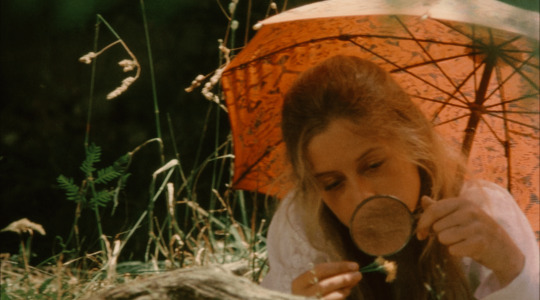
“You must learn to love someone else apart from me, Sara.”
Picnic at Hanging Rock (1975)
dir. Peter Weir
cine. Russell Boyd
#pahr#picnic at hanging rock#movies#films#peter weir#mystery#drama#rachel roberts#vivean gray#helen morse#kirsty child#anne-louise lambert#karen robson#jane vallis#christine schuler#margaret nelson#joan lindsay#jackie weaver#dominic guard#australian cinema#australian new wave#capspam#movieedit#filmedit#aesthetics#russell boyd
1K notes
·
View notes
Text


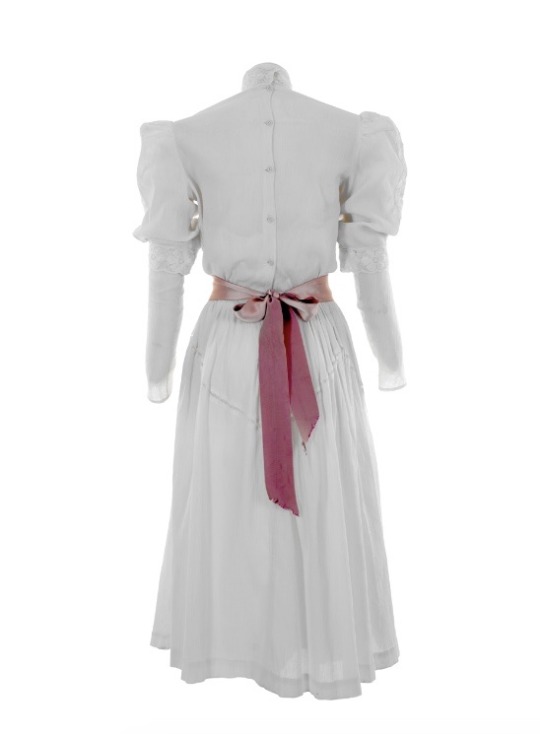
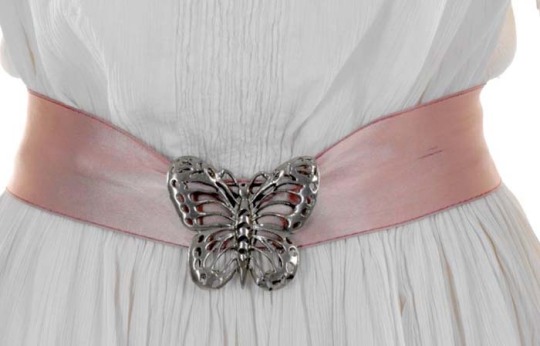


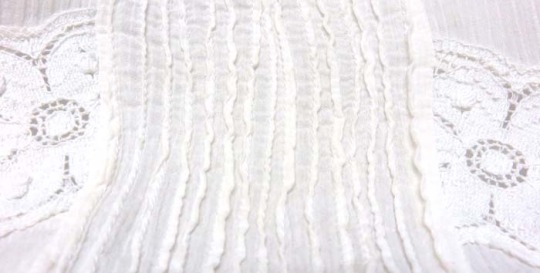
Miranda and Sara’s costumes from Picnic At Hanging Rock (1975).
'The daisy pattern in the lace trim of the dress was Miranda’s favourite flower. The butterfly-buckle was selected because like her, their lives are beautiful and brief.’
There is no pretty summer dress for orphan Sara, played by Margaret Nelson, who is forbidden from attending the picnic in Picnic at Hanging Rock. Sara’s costumes are plain and her hairstyles severe. The starched pinafore covers a practical school uniform skirt and blouse. The ensemble conveys no sense of the wearer’s body shape and is without personal touches or decoration.
15 notes
·
View notes
Text

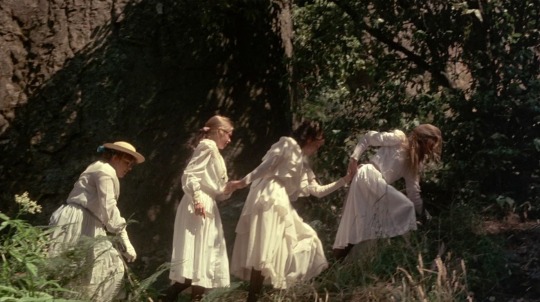
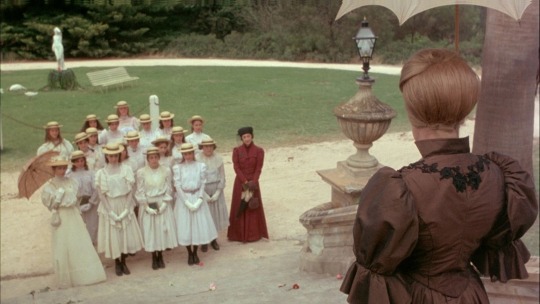
Picnic at Hanging Rock
1975. Mystery Film
By Peter Weir
Starring: Rachel Roberts, Dominic Guard, Helen Morse, Jacki Weaver, Anne-Louise Lambert, Margaret Nelson, John Jarrat, Wynn Roberts, Christine Schuler, Jane Vallis...
Country: Australia
Language: English
#Picnic at Hanging Rock#Peter Weir#Rachel Roberts#Dominic Guard#Helen Morse#Jacki Weaver#Anne-Louise Lambert#Margaret Nelson#John Jarrat#Wynn Roberts#Christine Schuler#Jane Vallis#Australia#English#1975#1970s#Mystery
8 notes
·
View notes
Photo



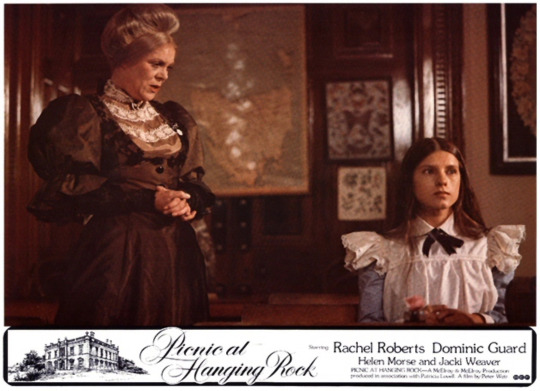






Picnic at Hanging Rock (1975) Peter Weir
January 30th 2023
#picnic at hanging rock#1975#peter weir#rachel roberts#helen morse#dominic guard#john jarratt#karen robson#margaret nelson#christine schuler#anne-louise lambert#wyn roberts#vivean gray#kirsty child#jacki weaver#tony llewellyn-jones#jane vallis#martin vaughan#favourite
25 notes
·
View notes
Text
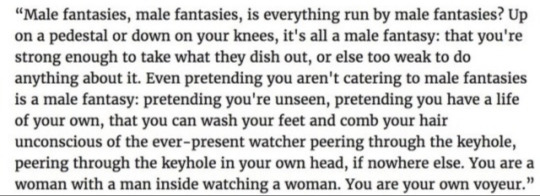



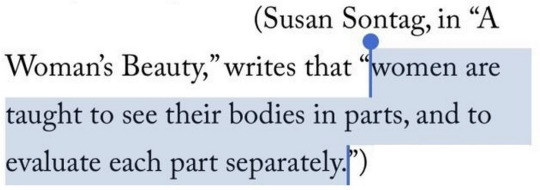
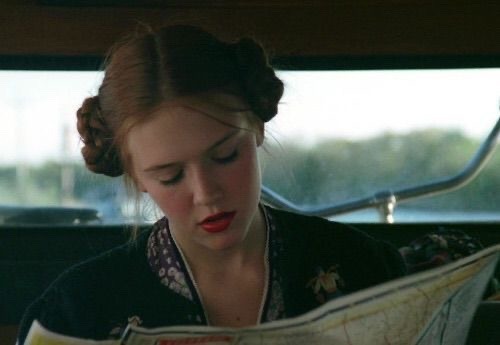



—the male gaze
the robber bride by margaret atwood // the virgin suicides (1999) // at test of objectification theory: the effect of the male gaze on appearance concerns in college women by rachel m. calogero // ex machina (2015) // a woman’s beauty by susan sontag // lolita (1997) // shame is an ocean, swim across by mary lambert // fleabag // fleabag: the scriptures by phoebe waller-bridge
#words#movies#parallels#comparatives#web weave#web weaving#male gaze#feminism#fleabag#phoebe waller bridge#the virgin suicides#margaret atwood#male fantasy#ex machina#a24#sofia coppola#lolita#vladimir nabakov
831 notes
·
View notes
Note
Hi there
So I follow the Tudor Trio and Nicola Tallis, Matthew Lewis and Nathan Amin were doing a debate today on the Princes in the Tower with the quote on quote new evidence that has been revealed from Philippa Langley.
I still firmly believe Richard III killed the Princes and find many of Matthew Lewis' arguments bizarre. I'm not sure why he thinks the Princes weren't a threat to Richard but were to Henry VII. If the Princes weren't a threat to Richard then why would they have been a threat to Henry VII? I can't understand why Richard would ever let them escape England of his own free Will. There is almost no chance they could have escaped without him knowing about it.
Also he claimed that Henry VII sent Elizabeth Woodville to Bermondsey Abbey and that she was supporting the Lambert Simnel Rebellion. Is there any truth to that? Thanks!
Hi, sorry for taking so long to reply! Lewis' arguments are so incredibly ridiculous — they largely rest on accepting at face value people's signatures and on the claim that Maximilian and Margaret of York were too blue-blooded to ever lie for political ends: essentially, he claims lying was for peasants. And yes, the princes would absolutely be a threat to Richard III as he found out as soon as he left London after his coronation — there happened a rebellion made by former Edwardian servants that aimed to free the princes from the Tower, very possibly to restore them to the throne. The princes had been raised all their lives to regard the English throne as their birthright — you're telling me they would grow up abroad and would neve try a restoration aided by one of England's political enemies such as France?
The ricardian claim that Richard III sent them to Burgundy is incredibly ridiculous to me as well: even if they stayed with Richard's sister, she wasn't the one ruling Burgundy — Maximilian of Austria, the husband of Margaret's deceased daughter-in-law, was. How could Richard be sure Maximilian wouldn't take the princes the minute Richard did something that went against Maximilian's interests and use them to either blackmail him or depose him so Maximilian could have his own English king? Burgundy had displayed lancastrian loyalties not so long ago in the past and the political game in Europe changed constantly.
It would have been absolutely STUPID of Richard III to deliver the strongest weapon anyone could use against him to a foreign power. Let's also mention that Maximilian at the time was struggling with controlling his own children, the actual Burgundian heirs, because some Flemish cities had rebelled against him and had his heir (Philip of Burgundy) in their power and were up in arms against his regency. From June 1483 to July 1485 Maximilian couldn't have control of his own son. You're telling me Richard would have sent the biggest assets anyone could use against him to that unstable scenario?
The truth is that Ricardians like Matthew Lewis benefit from the fact that people study/know about the Wars of the Roses from an impossibly anglocentric lens, ignoring that the conflict was also the outcome of the multiple iterations of power play between Western European powers: 'the Wars of the Roses were an extended episode in a European conflict, not just a murderous private dispute'. It really is inconceivable, when it comes down to logic, how Richard was one step ahead of everyone during the mounting off to his takeover of the throne (bamboozling and imprisoning the Woodvilles, executing and imprisoning Edward V's strongest supporters such as Hastings) but would commit such a basic political error as sending other claimants to his own crown to a foreign power.
As to Elizabeth Woodville going to Bermondsey Abbey as a way of punishment for her supporting a rebellion against Henry VII, it makes little sense as well. Henry VII carried on with the marriage negotiations with Scotland that involved Elizabeth and two of her daughters until James III's death in 1488. Again, it would make little sense for Henry VII to have found out Elizabeth was conspiring against him but keep wanting to send her north as an ally to Scotland, a country that could easily make war on him and create problems. Why would he deliver an enemy into the hands of another possible enemy, if Elizabeth truly conspired against him? Again, it's the lack of perspective into Europe and international politics that jump out in Lewis' logic.
Do my words make sense to you? I truly cannot comprehend how Lewis can say the stuff he says and no one really contradicts him in his logic.
20 notes
·
View notes
Text
THIS DAY IN GAY HISTORY
based on: The White Crane Institute's 'Gay Wisdom', Gay Birthdays, Gay For Today, Famous GLBT, glbt-Gay Encylopedia, Today in Gay History, Wikipedia, and more … February 4


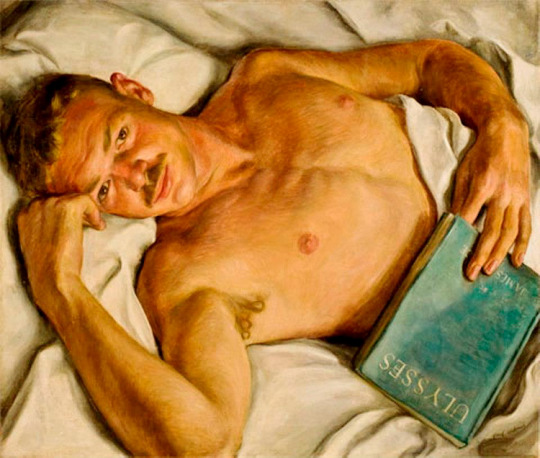
Jared French, as painted by his lover Paul Cadmus
1905 – Born: American painter Jared French (d.1988) who devised a pictorial language to explore human unconsciousness and its relation to sexuality. Most of his works consist of strange, statue-like, somnambulant figures with eerily blank facial expressions positioned in austere landscapes and plazas. Rendered in a technique so precise that they seem more real than real, French's paintings capture and maintain the viewer's interest and imagination.
At Amherst College in 1926, French met artist Paul Cadmus, who was briefly his lover and who became a life-long friend. After leaving Amherst, French took a job on Wall Street and then toured Europe with Cadmus between 1931 and 1933. During the 1930s and 1940s, French was a member of the Cadmus circle that included such gay literary and artistic figures as George Platt Lynes, Lincoln Kirstein, George Tooker, Glenway Westcott, and Monroe Wheeler. In 1937, French married artist Margaret Hoening, his and Cadmus's mutual friend. Cadmus did not seem upset with the marriage and the three were soon collaborating as members of the PAJAMA photographic group (the name of which was comprised of the first two letters of each of their given names).
The photographs taken by French, Hoening, and Cadmus are particularly important for documenting the gay and artistic community coalescing at Fire Island in the period from 1937 to 1945.

French's paintings reveal the central role sexuality plays in the artist's conception of humanity. In the tempera painting entitled Washing the White Blood from Daniel Boone (1939), American Indians symbolically wash away Boone's European ancestry to make him part of the collective unconscious. Boone's metamorphosis includes a sexual awakening. Surrounded by incredibly muscular, nearly nude male Indians, he stands in the middle of the canvas, arms outstretched, wearing obtrusively feminine underwear: tight, light pink hip-huggers laced up the center with a dark blue ribbon. This scenario suggests that the painting is an exploration of Jung's concept of man's repressed feminine aspect.
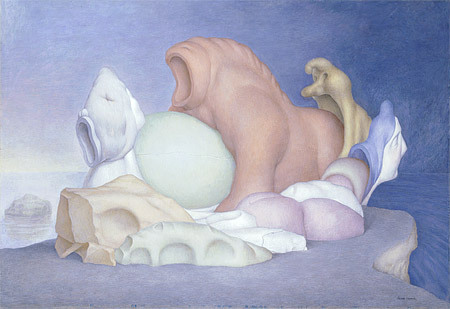
Nest
During the 1960s, French radically altered his imagery. He began drawing fantastic biomorphic creatures that, on closer inspection, are fragments of human torsos, heads, pelvises, and genitalia emerge. French made paintings out of only a few of these arresting drawings. In one such work, entitled Nest (1968-1969), a mass of fleshy, cartilaginous forms appears to mutate atop a seaside cliff. Somewhat horrifically, this hermaphroditic creature, made up of orifices, buttocks, faces, and spines, seems to have impregnated itself and is hatching its egg on a nest of flesh and bone.
In the latter part of his career, French fell out of favor with art critics and art collectors. At the end of his life, he was living in Rome, virtually in seclusion.

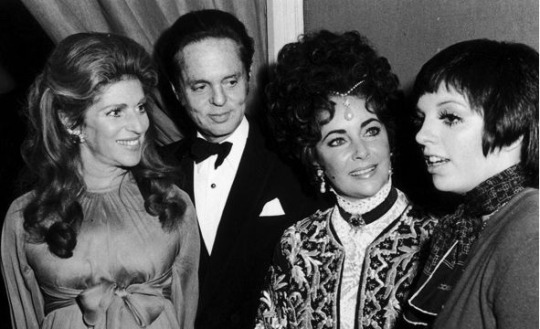
de Rede with Marie-Helene Rothschild, Liz Taylor and Liza Minnelli
1922 – Oskar Dieter Alex von Rosenberg-Redé, 3rd Baron von Rosenberg-Redé (d.2004), also known as Alexis, Baron de Redé, was a prominent French banker, aristocrat, aesthete, collector, and socialite. In 2003, he was appointed a commandeur of the Ordre des Arts et des Lettres for his restoration of the Hôtel Lambert where he was known for hosting opulent costume balls. Involved in horse racing, in 1972 he won the Prix de Diane and came in second at the Prix de l'Arc de Triomphe.
Oskar Dieter Alex von Rosenberg-Redé was born in Zurich, Switzerland, the third and youngest child of Oskar Adolf Rosenberg, Baron von Rosenberg-Redé, a banker from Austria-Hungary.He had two siblings. Born in 1919, his brother Hubert von Rosenberg-Redé was the heir to the barony, while his sister Marion von Rosenberg-Redé (born 1916) was handicapped.
The children were brought up Protestant and raised in a 16-room hotel suite at the Dolder Grand Hotel in Zurich, attended by a great many maids, nannies, porters, and valets. Their father visited occasionally. As their finances decreased with the onset of World War II, they moved into a two-bedroom suite. Diagnosed with leukemia, their mother died in 1931, when Redé was nine years old. Redé and his brother were then sent to be educated together at Institut Le Rosey in Switzerland.
On account of bankruptcy, his father committed suicide in 1939 at the family's estate (Villa Rosin) in the Austrian town of Kaumberg. Living on an insurance policy income of $200 a month, Redé moved to New York City, where he briefly attempted to acquire American citizenship. He traveled to California to work for an antique dealer, where he earned money to support his sister and befriended Elsie de Wolfe (known as Lady Mendl), as well as Salvador Dalí. He returned in New York in 1941.[8] His brother committed suicide in 1942 in Hollywood, California, whereupon Redé became the third and last Baron von Rosenberg-Redé, which was typically abbreviated as Baron de Redé in France.
In a New York restaurant, the 19-year-old Redé caught the eye of businessman Arturo López Willshaw and they became lovers in 1941. A married Chilean millionaire, Lopez-Willshaw lived with his wife Patricia Lopez Huici in a lavishly decorated house in Neuilly, France and was "famous for his extravagant costume entertainments." Shortly after they became a couple, Lopez-Wilshaw allegedly offered Redé $1 million to return with him to France.
By his own account, Redé was largely uninterested in affection or sex, and had only ever loved a Polish classmate at Le Rosey, an interest he never acted on. Redé was romantically involved with Arturo Lopez-Willshaw until Lopez-Wilshaw's death in 1962. Upon meeting Lopez-Wilshaw, Redé recollected losing his virginity to the man at the "sleazy" hotel Winslow on East 55th Street.
As Redé recalled of the beginning of the relationship, "I was not in love. But I needed protection, and I was aware that he could provide this." In addition, he observed, "The money gave me the security I craved, and it would also enable me to look after my handicapped sister."
After their move to Paris, Lopez-Wilshaw unofficially lived with Redé at the Hôtel Lambert while maintaining a formal residence with his wife in Neuilly.
With his wealth deriving from his lover, Redé's social notoriety rested on being a kept man. In 1953, author Christian Mégret published Danaé, a popular roman à clef based on Redé's and Lopez-Willshaw's life together. The racy details were provided by one of their close friends and Mégret's companion, Princess Ghislaine de Polignac. Lopez-Willshaw promptly banned Polignac from his home, although Redé later relented and became friends again.
Redé maintained his apartment at the Hotel Lambert throughout his later years, remaining an active host. He died suddenly at the home of a friend, Carmen Saint, at the age of 82, of heart issues. Redé's estate, notably the contents of his apartment at the Hôtel Lambert, was auctioned after his death by Sotheby's and realized £5.2 million. His memoirs, Alexis: The Memoirs of the Baron de Redé, were published posthumously in 2005.


1938 – Martin Greif was born in the Bronx, New York and was an editor, publisher, writer and lecturer. (d.1996)
In 1982 he published a book called The Gay Book of Days – 'An evocatively illustrated who's who of who is, was, may have been, probably was, and almost certainly seems to have been gay during the past 5,000 years'. The book was published in the UK in 1985. This history and many other blogs and sites have used it as a starting point.
Martin Greif also published and edited a large number of other books, mostly through the two publishing houses he and his partner founded, Main Street Press in the US and Orchard Hill Press in Ireland.
He spent his latter years with his longtime work and life partner, Lawrence Grow, in County Cork, Ireland. Larry Grow died from an AIDS-related stroke in 1991 and Martin Greif died from AIDS in 1996.

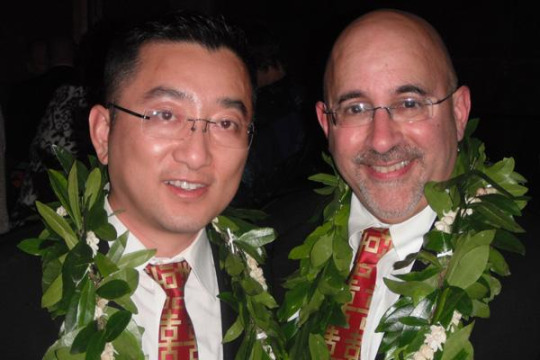
Evan Wolfson (R) and Cheng He wedding
1957 – Born: Evan Wolfson is an American attorney and gay rights advocate. He is the founder and executive director of Freedom to Marry, a group favoring same-sex marriage in the United States. Wolfson, who many consider to be the father and leader of the same-sex marriage movement, authored the book Why Marriage Matters; America, Equality, and Gay People's Right to Marry, which Time Out New York magazine called, "Perhaps the most important gay-marriage primer ever written..."
Returning to the United States after his service in the Peace Corps in Togo, Wolfson entered Harvard Law School. His interest in glbtq rights led him to discover John Boswell's book Christianity, Social Tolerance, and Homosexuality (1980), which had a profound impact on him.
Wolfson took an important step in his personal life: he came out to his family. Describing the moment to reporter Mark S. Warnick, he stated,
"I think they were all surprised. I think that their main reaction was sadness, that I was not going to have the kind of life they expected and were familiar with. But they were always loving and supportive. They're very proud of what I do and they've always been there for me.
From 1989 until 2001 Wolfson worked full-time at Lambda Legal Defense and Education Fund, a gay rights advocacy non-profit. He directed their Marriage Project and coordinated the National Freedom to Marry Coalition, the forerunner to Freedom to Marry. Wolfson co-wrote a brief in Baehr v. Miike, in which the Supreme Court of Hawaii said prohibiting same-sex marriage in the state constituted discrimination, and worked on Baker v. Vermont, the Vermont Supreme Court case that led to the creation of civil unions in Vermont by the state legislature as a compromise between Wolfson's group and those objecting to same-sex marriage. Wolfson called the unions a "wonderful step forward," but not enough.
Wolfson appeared before the United States Supreme Court in 2000, to argue on behalf of Scoutmaster James Dale in the landmark case Boy Scouts of America v. Dale, in which the Court ruled that the Boy Scouts organization had the right to expel Dale for revealing that he was gay. The Court ruled 5-4 against Dale, but Wolfson, said, "We are succeeding in getting people to rethink how they feel about gay people."
On April 30, 2001, Wolfson left Lambda to form Freedom to Marry. Wolfson described his vision for the new organization: "I'm not in this just to change the law. It's about changing society. I want gay kids to grow up believing that they can get married, that they can join the Scouts, that they can choose the life they want to live."
He is adamant that victory means the right to marry, not to have different and less beneficial systems such as civil unions or domestic partnerships for gay and lesbian citizens. "You don't ask for half a loaf," he declared. "We don't need two lines at the clerk's office when there's already an institution that works in this country, and it's called marriage. One of the main protections that come with marriage is inherent in the word: certainly in times of crisis any other word than marriage would not bring the same clarity or impart the same dignity."
Wolfson takes inspiration from the words of Gandhi on the process of change: "First they ignore you. Then they laugh at you. Then they fight you. Then you win."
Wolfson and his partner (now husband), Cheng He, a Canadian-born microbiologist, reside in New York.
Fittingly, Wolfson and Freedom to Marry were deeply involved in the successful struggle to achieve marriage equality in the Empire State. Freedom to Marry became a founding member of the New Yorkers United for Marriage coalition, which was put together by Governor Andrew Cuomo to forge a coherent strategy to build support for marriage equality in the state. Freedom to Marry invested over $1,000,000 in the campaign, including more than $500,000 for television, newspaper ads, and direct mail, and over $100,000 in polling, all aimed at making sure legislators heard from the couples affected, their loved ones, and the 58% of New Yorkers who supported the freedom to marry.The New York legislature finally passed the marriage equality bill in a historic vote on June 24, 2011.
Wolfson and Dr. Cheng He were married in New York City on October 15, 2011. They have been a couple since 2002. In an interview with Nate Schweber of the New York Times for a feature story on their marriage, Wolfson said, "For me, getting married is not about making a political statement; it's about wanting to build a life together, wanting to have protections for one another, wanting to make a commitment in front of your family and friends, just like everyone else."


1969 – Joel Burns is an American politician. A city councilman for District 9 in Fort Worth, Texas, he received extensive press attention in October 2010 after speaking at a council meeting about the issue of suicide among lesbian, gay, bisexual and transgender youth, as part of Dan Savage's It Gets Better campaign.
In his speech, which was subsequently released on the Internet as a video, Burns spoke about his own experience as a 13-year-old boy facing bullying at school in Crowley, Texas, because of his sexual orientation. At one point in the video, he broke down and struggled to push forward with his prepared speech, eventually opting to skip a few lines. In subsequent media coverage, he confirmed that the section he skipped included an acknowledgement that he too had considered committing suicide because of the harassment he was facing.
youtube
Joel Burns' full speech (13 mins)
The speech resonated throughout the Internet in a matter of minutes after Gawker.com first reported the clip on its Gawker.TV website. Shortly thereafter, Burns held his first television interview on the subject with CNN's Ali Velshi, after the show aired the thirteen-minute YouTube clip in its entirety, an unprecedented occurrence for a major daytime news program. One day later, Burns and his speech was featured on scores of national and international news media, as well as NPR's All Things Considered. In under one week, the clip had garnered over one and a half million views, ultimately leading to Burns' in-studio interview with Matt Lauer on NBC's Today Show as well as an appearance on the popular Ellen DeGeneres talk show. As of late March 2011, the clip had sustained over 2.5 million hits, making it one of the most-watched videos in the 'It Gets Better' campaign.
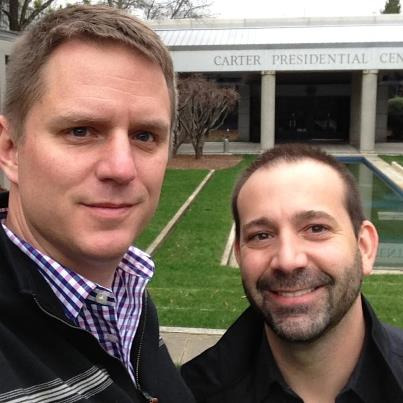
Joel with his long-term partner, J.D. Angle
Burns was first elected to Fort Worth City Council in 2007 in a special election, during which a sitting city council-member, Chuck Silcox (who is now deceased), campaigned for Burns' opponent Chris Turner because Turner was straight. Both straight and gay voters of Fort Worth's District 9 overwhelmingly voted for Burns despite the political homophobic remarks. He was elected to a full term in the 2009 municipal election. He was the first openly gay person ever elected to political office in Tarrant County.
In 2009, on the 40th anniversary of the Stonewall Riots, the Texas Alcoholic Beverage Commission conducted a raid on a Fort Worth gay club, prompting a large public outpouring of anger towards the Commission and the Fort Worth Police Department. During a very heated City Council meeting shortly after the raid, Joel Burns reassured many of the gay Dallas-area protesters in attendance that the City of Fort Worth will not allow such intolerance to continue and vowed to create a GLBT Liaison within the Fort Worth Police Department.
Burns announced on February 11, 2014 that he was resigning his seat on Fort Worth City Council to pursue a Master in Public Administration from the Harvard Kennedy School in Cambridge, Massachusetts.


1974 – Lee Pearson CBE is a 10-times paralympic games gold medallist having represented British para-equestrianism in Sydney, Athens, Beijing and London. He also has six world-championship and three European titles.
Pearson was born with arthrogryposis multiplex congenita and first came to public attention in 1980 when then-British Prime Minister Margaret Thatcher carried him up stairs in 10 Downing Street having awarded him a 'Children of Courage' medal. He currently lives in Bagnall, Staffordshire.
He turned professional after he was inspired by the Atlanta Olympics. He won three gold medals in the championship dressage, freestyle dressage, and team dressage events at the 2000, 2004 and 2008 Summer Paralympics. He won gold in the team dressage event at the 2012 Summer Paralympics, silver in the championship dressage and bronze in the freestyle.
He noted after his failure to win gold in the freestyle competition in London that he had been voted down by the British judge but said that he would compete at the 2016 Summer Paralympics in Rio, on a different horse.
Lee Pearson CBE currently is the title holder of no less than 34 Gold medals at European, World and Paralympic level. Probably making him the most successful Equestrian Athlete ever.
Pearson runs his own dressage yard in Staffordshire and teaches many around the countryIn August 2012 the Independent reported that Lee had a new, 18 year-old boyfriend Ben after "He broke up with [Lincolnshire fireman Mark] Latham in February [2012] and is now in the process of a messy divorce" from their civil partnership which began in August 2010. Mark Latham responded to explain, "Mr. Pearson is not 'ending' the Civil Partnership as I am the one petitioning against him on the grounds of unreasonable behaviour."
In 2014, ahead of a planned trip to decry anti-gay propaganda at the Sochi Winter Olympics, Pearson almost dared Russian President Vladimir Putin to throw him in jail, becoming one of the UK's highest-profile gay athletes.
1975 – The first Gay-oriented television commercial in the U.S. aired on two network affiliate stations in Washington D.C.. Lambda Rising Bookstore sponsored the ads on episodes of Phil Donahue and Marcus Welby, M.D. Stations balked at airing the ads, but relented after getting approval from the Association of Broadcasters Standards Office.


2017 – The Movie, Kept Boy, written by Robert Rodi, is released.
Robert Rodi (b.1956) is an American writer and author of satiric novels and comic books.
Robert Rodi was born 'in a cosy middle-class suburb of Chicago, right around the time cosy middle-class suburbs were feeling the firsts blasts of scorn from the burgeoning counterculture. Twenty-two years later, he earned a bachelor's degree in Philosophy just as the curtain went up on the hyper-materialist Reagan era. Not long afterwards, he came out of the closet just as gay men were dealt the first crushing blow of the AIDS crisis … It was thus perhaps inevitable he turned to writing comedy.'
His first novel, Fag Hag, was published in 1991 and was swiftly translated into Italian, French, German, and Japanese. It was followed in quick succession by Closet Case (1992), What They Did to Princess Paragon (1994), Drag Queen (1995), Kept Boy (1997) and Bitch Goddess (2002) and When You Were Me (2007).
Rodi's shorter fiction can be found in a number of anthologies, including Men On Men 5, His, and Sandman: Book of Dreams. His novella Glad, Gladder, Gladys was serialised online at USAToday.com. His literary criticism has appeared in the pages of The Chicago Tribune, The Los Angeles Times, NewCity, and The Harvard Gay and Lesbian Review.
Rodi is the creator of several comic-book series, including 4 Horsemen, Codename: Knockout, and The Crossovers. He was a founding member of the Chicago-based gay performance art troupe, The Pansy Kings, who were active throughout the 1990s, and he wrote sketches for the Live Bait Theater's revues Junk Food and Dear Jackie: The Queen of Camelot Remembered.
Rodi still lives in Chicago, in a century-old Queen Anne house with his partner Jeffrey Smith and a constantly shifting number of dogs.
Warner Brothers took an option on his novel Kept Boy, and Rodi adapted it it for the screen with David Ozanich. It was released in 2017 to mixed reviews.
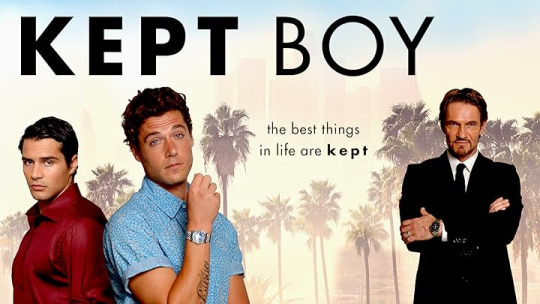


14 notes
·
View notes
Text
mwdh milf/dilf simulator. Char list so u know who I'm talking abt for the characters who have dif last names than the MCs
Caroline Amaranth - You're her college fling and the route ends with her saying you're cute but she's happy with her husband
Jonathan Amaranth - he deadass has no idea you're coming on to him until the end.
Claudia and David Anderson - Pure friendship route i really dont think you can even try to homewreck these two even a little bit
Arthur Vermillion - I Miss My Dead Wife
Paulina Lambert - honestly the most wholesome after Melissa. Only Paulina is available you are not dating Zacharie's shitty swagless conservative parents. as opposed to Liam's conservative parents who do in fact possess a modicum of swag
Jasper Harvey - I can fix him route
Melissa Iniguez - awl Muffy-esque route where you help her find happiness after a long string of heartbreaks
Margaret Farrow - Office Lady/Bad Bitch CEO toxic yuri. You can only pursue her as a woman
Thomas Farrow - his autistic swag is captivating. He has no idea you're coming on to him the entire time.
Laura Schultz - Office lady yuri 2 the yuri-ing: this time its not toxic
Gregory Matthews: Free spirit who just wants to travel, have fun trying to convince him to settle down a second time.
16 notes
·
View notes
Text

The Cave Bear Story: Life and Death of a Vanished Animal by Björn Kurtén.
73 notes
·
View notes
Text
Six actors who's names share a common root
Hannah (12)
Jana Larell Glover, Anna Uzele, Hana Stewart, Annamaria Baranyai, Anita Gado, Hannah Lowther, Annabel Marlow, Anna Peller, Gerianne Perez, Analise Rios, Hannah Taylor, Anna Terpiłowska
Elizabeth (9)
Ellie Jane Grant, Izi Maxwell, Ella Burns, Bella Coppola, Izabela Pawletko, Analise Rios, Leesa Tulley, Elizabeth Walker, Ellie Wyman
Laurence (8)
Laura Dawn Pyatt, Lauren Byrne, Lauren Irving, Lauren Mariasoosay, Laura Blair, Lauren Drew, Loren Hunter, Lori McLare
Margaret (7)
Małgorzata Chrusciel, Meghan Corbett, Meghan Dawson, Meg Dixon-Brasil, Megan Gilbert, Maggie Lacasse, Megan Leung
Christos (7)
Kirsty "Zara" MacIntosh, Keirsten Nicole Hodgens, Cristina D'Agostino, Kristina Leopold, Christina Modestou, Kristina Walz, Krisztina Magyar
Helen (6)
Ellie Jane Grant, Elena Breschi, Ella Burns, Elena Gyasi, Aline Mayagoitia, Ellie Wyman
John (6)
Jana Larell Glover, Gianna Grosso, Jaina Brock-Patel, Janique Charles, Janice Rijssel, Lori-Jane McLare
Nicholas (6)
Nicole Louise Lewis, Nikki Bentley, Nikolett Gallusz, Collette Guitart, Nicole Kyoung-Mi Lambert, Nicole Lamb
Alexander (5)
Alexia McIntosh, Sasha Renae Brown, Alexandra "Zan" Berube, Aleksandra Gotowicka, Ji-sun "Lexie" Kim
Gabriella (5)
Gabbi Mack, Gabrielle Davina Smith, Gabriela Francesca Carillo, Gabriella Stylianou-Burns, Gabriella Boumford
Jasmine (5)
Jasmine Shen, Jasmine Smith, Jasmine Forsberg, Jasmine Hackett, Jaz Robinson
Julius (5)
Juli Horanyi, Giulia Marolda, Julia McLellan, Julia Pulo, Jillian Worthing
Adal (4)
Alicia Corrales-Connor, Alyssa Giannetti, Alize Ke'Aloha Cruz, Aline Mayagoitia
Amy (4)
Amy Bridges, Aimie Atkinson, Amy Di Bartolomeo, Kara-Ami McCreanor
Courtney (4)
Courtney Monsma, Courtney Stapleton, Courtney Bowman, Courtney Mack
Emil (4)
Amelia Walker, Emily Rose Lyons, Emily Harrigan, Emilia "Millie" O'Connell
Katherine (4)
Caitlyn De Kuyper, Kathryn Kilger, Caitlin Tipping, Kate Zulauf
Kayla (4)
Kala Gare, Khaila Wilcoxon, Kaylah Attard, Kayla McSorley
Monica (4)
Monika Nika Veres, Monique Ashe-Palmer, Janique Charles, Mónika Horváth
Sophia (4)
Sophie Golden, Sophie-Rose Middleton, Fia Houston-Hamilton, Sophie Isaacs
Abigail (3)
Abigail Sparrow, Abbi Hodgson, Abby Mueller
Aenor (3)
Ellie Jane Grant, Ella Burns, Ellie Wyman
Danielle (3)
Danielle Steers, Danielle Mendoza, Danielle Rose
Eireann (3)
Aryn Bohannon, Erin Palmer Ramirez, Erin Caldwell
Hayley (3)
Haley Izurieta, Hailee Kaleem Wright, Hailey Lewis
Laura (3)
Laura Dawn Pyatt, Laura Blair, Lori McLare
Lucius (3)
Lucy Aiston, Lucia Valentino, Lucinda Wilson
Natalie (3)
Natalie Pilkington, Natalie Paris, Natalia Kujawa
Oliver (3)
Olivia "Liv" Alexander, Olivia Donalson, Oliver Wickham
Rhiannon (3)
Rhiannon Bacchus, Rhiannon Doyle, Rhianne-Louise McCaulsky
Sarah (3)
Kala Gare, Sadie Hurst, Sarah McFarlane
Theodore (3)
Terica Marie, Didi Romero, Dóra Csonka
Agnes (2)
Inez Budd, Agnieszka Rose
Aisha (2)
Aiesha Naomi Pease, Aisha Kardffy
Alan (2)
Lana Zoe Jensen, Alana M. Robinson
Amanda (2)
Amanda Lee, Amanda Lindgren
Ashley (2)
Ashlee Waldbauer, Ashleigh Weir
Brian (2)
Brianna Brito Mooney, Brianna Javis
Cassandra (2)
Cassandra Lee, Cassie Silva
Cathassach (2)
Casey Esbin, Casey Al-Shaqsy
Ceallach (2)
Kelly Sweeney, Kelly Denice Taylor
Cennetig (2)
Kennedy Carstens, Kenedy Small
Charles (2)
Carly Mercedes Dyer, Caroline Siegrist
Chelsea (2)
Chelsea Lorraine Wargo, Chelsea Dawson
Chloe (2)
Chloe Zuel, Chloe Hart
Eloise (2)
Eloise "Ellie" Sharpe, Eloise Lord
Eric (2)
Terica Marie, Erika Herceg
Grace (2)
Grace Mouat, Grace Melville
Hadrian (2)
Adrianna Glover, Adrianna Hicks
Henry (2)
Harriet Watson, Harriet Caplan-Dean
Holly (2)
Holli' Conway, Holly Musgrave
Jennifer (2)
Jennifer Caldwell, Ji-woo "Jennifer" Kim
Jessica (2)
Jessica Niles, Jessica "Jessie" Bodner
Ludwig (2)
Lou Henry, Rhianne-Louise McCaulsky
Maia (2)
Maiya Quansah-Breed, Maya Christian
Martha (2)
Marta Burdynowicz, Marta Skrzypczynska
Mary (2)
Annamaria Baranyai, Marilyn Caserta
Matilda (2)
Maddison Bulleyment, Maddison Firth
Melissa (2)
Melinda Porto, Melissa J. Ford
Rachel (2)
Rachel Rawlinson, Rachel "Rae" Davenport
Renatus (2)
Renee Lamb, Brene "Bre" Jackson
Shannon (2)
Shannen Alyce Quan, Su-jeong "Shannon" Pae
Sidney (2)
Cydney Clark, Sydney Parra
Taylor (2)
Taylor Iman Jones, Taylor Pearlstein
Victor (2)
Victoria "Vicki" Manser, Viki Singh
17 notes
·
View notes
Text
& Juliet Dreamcast
The &J Tour announcement got me super excited so, of course, I started working on a dreamcast with all US Six actors. It's been a few months of working on this on and off and trying to figure out who all is a good fit for which roles (and can do the dancing) but I'm pretty happy with it. Shoutout to @lightleckrereins who helped with some of this + tracking down some headshots!




Juliet: Joy Woods
Anne: Mallory Maedke
Angelique: Olivia Donalson
Eleanor/Benvolio: Willow Dougherty
Judith: Jana Larell Glover
Lady Capulet/Nell: Holli' Conway
Lucy: Kelsee Kimmel
Imogen: Danielle Mendoza
Rumour: Aja Simone Baitey
Viola/swing: Kelly Denice Taylor
Gwynne/swing/DC: Cassie Silva
Margaret/swing: Nicole Kyoung-Mi Lambert
Titania/swing: Ashlee Waldbauer
Olivia/standby: Kristina Leopold
Understudies:
Juliet: Jana Larell Glover, Holli' Conway, Kristina Leopold
Anne: Willow Dougherty, Kelsee Kimmel
Angelique: Kelly Denice Taylor, Kelsee Kimmel
9 notes
·
View notes
Text


31st March 1652 saw the Honours of Scotland saved from Cromwell’s forces at Dunnottar Castle.
There are a few different versions of how The Honours were saved, and I usually get questioned about whatever version I use on this date, I am posting a version direct fro The University of Aberdeen’s web site, fittingly, written in The Doric.
Back in the days lang ago fan fowk wir aye fechtin wi een anither a chiel caad Oliver Cromwell hid gotten rid o King Charles I an cut aff his heid. He then taen ower England an wis for takkin ower Scotland as weel. Noo, there wir fowk fa thocht that he’d nae richt tae dee that, but Cromwell’s airmy wis ower strong for them an they his tae dee aa they could jist tae survive.
Een o the things Cromwell wintit wis the ‘Honours o Scotland’ - that wis the croon, sword an sceptre; the Scottish Croon Jewels. But thir wir fowk fa werena for lettin Cromwell hae them and Honours landit up in Dunnottar Castle jist aside Steenhive. Fan the 'Roondheids’, that’s fit Cromwell’s supporters wir caad because o the shape o the helmets his airmy wore, heard aboot far the croon jewels were they sent an airmy tae get them back. The airmy wis commandit by General Lambert an he demandit that George Ogilvie, the Governor o Dunnottar haun them ower tae him. But the Governor refused an the castle wis surrounded by Lambert’s airmy an naebody could get in an naebody could get oot. Nae even maet wis allowed in. Dunnottar’s hich on the cliffs an wis affa difficult tae attack but Lambert thocht he could stairve the fowk in the castle in tae giein up. Ae thing that wis allowed in wis some medicines for Margaret Ogilvie, the Governor’s wife fa wis nae weel.
The wife o the minister o Kinneff Kirk, Mary Grainger, wis allowed in tae tak in medicine an bandages for Mrs. Ogilvie an her man, the Reverend James Grainger. He wis already in the castle for he widna leave his fowk fan they wir in sic a steer o trouble. Mrs. Grainger an her maid, Alison wir kenspeckle figures gyan in an oot o the castle an the sodjers gairdin the doors got eesed tae seein them.
Ae day fan the twa weemin wir veesitin an argy-bargy got up aboot fit wis tae be deen wi the croon, sceptre an sword.
“We canna hing on muckle langer,” said the Governor, “We’re near haun oot o maet an we’ll be aitin sea maws neist. We’ll hae tae gie in seen. Fit can wi dee aboot the Honours?”
“Weel,” said the Rev. Grainger, “we canna bury them, this rock’s ower hard an there’s nae pint in tryin tae hide them for Cromwell’s airmy will either find them or burn the buildin till there’s nithin left.”
“I’ve an idea,” said Mrs. Grainger, “Alison an I could smuggle them oot. The sodjers ootside are eesed tae us gyan back an fore. We could walk throu them get on oor horses an be hame afore they’d jalouse fit hid happened.”
“Na, na. Wi canna hae that,” said the Governor. “D'ye ken fit the sodjers wid dee tae ye if you an Alsion wir found oot?”
“Besides that, ye aye arrive wi bundles an parcels, ye dinna leave wi them,” said Rev. Grainger. “That plan’s nae eese av aa.”
“But fit if we wir comin fae a direction they wid expeck us tae come fae cairryin baskets?” spiert Mrs. Grainger.
“Fit div ye mean?” spiert the Governor.
“Weel,” explained Mrs. Grainger, “If we were comin up fae the rocks aneth the castle cairryin baskets o dulse, fit wid be wrang wi thon? Far else wid ye get dulse but doon on the rocks.”
“Ye’ll need tae explain a bittie mair,” said the minister, “ Fu dee ye expeck tae find the Honours on the rocks an fu are ye tae get doon there yersel?
"Here’s aa wi need tae dee,” said Mrs. Grainger. “Alison will heid for the bottom o the cliffs alang the rocks. I’ll arrive at the gate as usual wi a lot o lint bandages, a fyow mair nor usual but the gairds will nivver ken the difference. Noo, ye mak up a wee cheer that I can sit on. Mak a rope wi the bandages an syne ye’ll lower me doon tae the bottom o the cliff an I’ll be haudin a basket wi the croon, sceptre an sword in it. Alison’ll help me at the bottom o the cliff. We’ll hap the croon jewels in dulse an set aff back tae Kinneff Kirk.”
“Are ye gyan gyte, umman!” wis Rev. Grainger’s answer tae the plan.
“James, fit else can wi dee? Is aa this time sufferin in here tae be for nithin?”
Rev. Grainger lookit at his wife an the servin lass an shook his heid. “Aye. Maybe ye’re richt. Ye’ll need tae prepare a place tae hide the Honours an I think I ken jist the place. Get Wattie fae the smiddy tae help ye. He’s a true chiel an wid dee onythin tae help the King. Get Wattie tae help ye shove back the poopit an lift een o the flagsteens unnerneth. Dig oot a hole an fan ye get back tae the Kirk, an God willin, ye will, ye can beery the honours in the yird aneth the poopit.”
“That seems tae be settled, then. Mrs. Grainger, Alison, Scotland will nivver forget fit ye’re deein for the country,” said the Governor an the plan wint intae action.
The neist day Mrs. Grainger arrived at Dunnottar an, as usual, wis let intae the castle withoot ony bother. Eence inside she got oot the lint an it wis twistit intae ropes an tied tae a wee cheer that Rev. Grainger hid made up. They wint tae the back o the castle that looks doon tae the bottom o the cliff an Mrs. Grainger wis lowert ower the side wi the croon jewels in a dulse basket that she wis cairryin. It wis a relieved Mrs. Grainger that felt rocks unner her fit efter fit seemed an age traivellin doon the side o the cliff. Alison wis there tae help her.
Alison hid already gaithert a wheen o dulse an it wisna lang afore the honours were hidden aneth a pile o dulse in twa separate baskets. The twa lassies stertit up the cliffs an Mrs. Grainger hid tae waatch an see the sodjer fa hid lettin her intae the castle didna see her comin up fae the rocks or he micht hae jaloused fit wis gyan on.
Fan they got tae the tap o the cliff they were in for a begeck for fa wis staunin there but General Lambert himsel.
“An fit hiv ye twa bin up till?” he spiers.
Alison lookit worried but Mrs. Grainger wis quick wi an excuse, “Wiv bin gaitherin dulse. Nithin better for the caul on a frosty day!”
The General lookit at the baskets syne gaed his heid a shak, “You sea gyan fowk’ll ait onything. Gyads! Saeweed for denner! Fit could be worse?”
An wi that he turnt roon an tellt the serjint o the gaird tae, “Escort the lasses tae thir shelts an get us aa fae the smell o the dulse!”
Withoot anither wird or a look roon the twa lasses marched tae thir wee shelts, mounted an trotted aff on the road tae Kinneff Kirk. Eence at Kinneff they met in wi Wattie fa hid already shiftit the poopit an raised the flagsteen. The Scottish Croon jewels wir beeriet an the poopit shoved back on tap. Tae help pit the Roonheids aff lookin for the Honours a rumour wis spread that Sir John Keith, youngest son o the Earl Marishal had managed tae get the Honours smuggled oot tae France. But they bade in Kinneff Kirk for acht year until Charles II wis back on the throne an the honours wir returned tae thir hame in Edinburgh Castle. But things micht hae bin far different if it hidna bin for twa lasses fa saved the Honours o Scotland.
12 notes
·
View notes
Photo






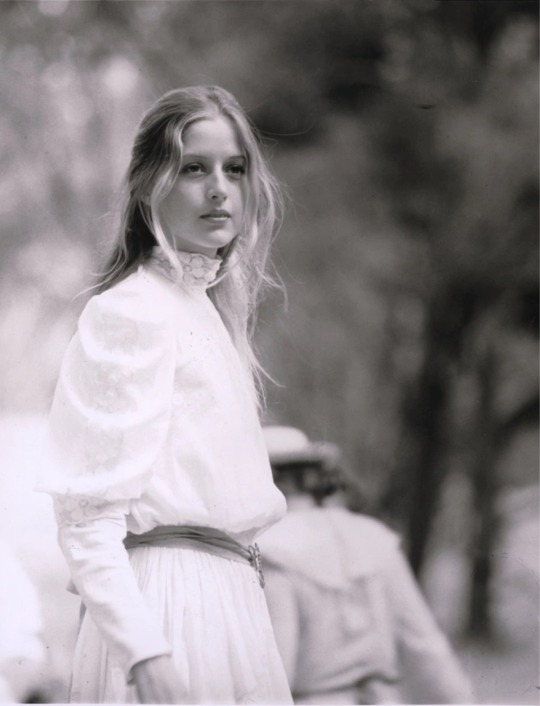
Picnic at Hanging Rock (1975) Peter Weir
May 16th 2022
#picnic at hanging rock#1975#peter weir#rachel roberts#helen morse#dominic guard#john jarratt#margaret nelson#wyn roberts#karen robson#anne-louise lambert#kirsty child#jane vallis#christine schuler#vivean gray#jacki weaver#tony llewellyn-jones#martin vaughan#favourite
1 note
·
View note
Text
Discussing the de la Pole claim (2/3): The Tudor-de la Pole cohabitation (1485-1501).
John de la Pole clearly favoured his uncle Richard III considering that he fought at Bosworth for him. The annuities and offices bestowed upon him by Richard III alone could explain his support. He was captured by Henry VII, spared, and then released with a position on the Royal Council. A few months later, he would exile himself to the Continent, plot with his aunt Margaret of York and various discontents to... enthrone Lambert SImmel, claiming he was Edward Plantagenet, Earl of Warwick. This move often puzzled historians (and led to bad takes). Why didn't John de la Pole push his claim and favour an obvious fake?
We cannot know for sure, but part of the answer might be that Richard III did not name John his heir. Hence, John de la Pole would have more difficulties making good his blood claim to the throne. It also explains why Henry VII decided to release him shortly after Bosworth. Henry VII clearly regarded Warwick as a potential rival, but less John.
John de la Pole might have had royal ambitions. However, he clearly put them aside for the last Plantagenet, who carried more support. Warwick might have been more popular in Ireland or with his aunt Margaret of York. Maybe John intended to show Simmel as a fake after his victory, but that would pose the question of what he would do with the real Warwick if he won at Stoke. It would be dangerous to usurp the throne and risk losing the support of his allies, who clearly preferred Warwick. An intermediate and more realistic goal for John might have been a restoration of his annuities, offices, and the influence John had with Richard III. While Henry VII released and didn't attaint him, he took back Richard's grants and John, as a new convert to the Tudor dynasty, carried a minor influence on the new king. A grateful Edward V (or VI) would have been better for him.
Anywhomst, John lost at Stoke and was killed in action. Henry VII wanted to avoid making a foe from John's father, Suffolk and granted his son's land to him, but without the possibility of transmitting them to his four surviving sons.
The death of John de la Pole, Duke of Suffolk, in 1492 would change Henry VII's approach to the de la Pole family. A sizeable chunk of de la Pole estate was returned to him ( Lincoln's lands), while Suffolk's widow was granted 1/3 of her late husband's estates as dowry. Edmund de la Pole would become a young but impoverished duke with less than £1,000 of income. Henry VII would make a deal with him, giving back a portion of his brother's lands in exchange of £5,000, paid progressively and the demotion of his title from duke to earl (his grandfather's title until 1448). Interpreting this deal is difficult between the view of Henry VII seeking to humiliate and reduce a rival or a deal made to keep afloat a magnate that might have sunk otherwise. Edmund's grandfather owed his dukedom from heavy-handed favours from Henry VI that were lost in 1450. Edmund's father was probably demoted in 1459 because of an inability to sustain his rank before Edward IV's usurpation that restored his ducal title. The de la Poles were poorly endowed, and with a king unwilling to actively help them, a demotion was inevitable.
Edmund de la Pole's career as a magnate (1492-1501) shows that de la Pole-Tudor enmity wasn't unavoidable. After initial and difficult settlements with the Crown, Edmund de la Pole had a loyalist career. He accompanied Henry VII at his attempted siege of Boulogne (1492), and more importantly, he was a loyalist leader against the Cornish rebellion in 1497. Edmund actively supported Henry VII against a serious rebellion of 15,000 Cornish led by lord Audley and fought for Henry at the battle of Blackheath. There were also no links between him and the Perkin Warbeck conspiracy (contrary to his East-Anglia neighbour, lord Fitzwalter). Edmund de la Pole had a seemingly loyalist career and seems to have been close to the queen, Elizabeth of York.
The relationship between the king and the Earl of Suffolk started to collapse in 1498 when Edmund murdered a man and was judged on the king's bench but eventually pardoned by Henry VII. It is possible that Suffolk resented a humiliating trial. In july 1499, Edmund did flee to Guisnes, a city controlled by England whose governor was Sir James Tyrell. The reason for such a departure is unknown. Notably, the plot to free Warwick and Perkin Warbeck from the Tower of London was under fruition at that time, and Suffolk was sometimes in London. However, he returned to England in September and was present at court when Henry VII decided to execute Perkin Warbeck, various of his accomplices, and the last Plantagenet.
Those executions hurt Henry VII's relationship with Edmund. Any discontent toward Tudor rule would come to him as a claimant by default, considering the end of other Yorkist pretenders.
Henry VII was more wary about a magnate who was a prime alternative to his rule and proved erratic and unreliable. He applied pressure: Edmund lost two trials in 1500-1 and was fined £100 for claiming the allegiance of a yeoman and lost a trial regarding contested lands in Norfolk. Some of his close servants were fined for not appearing in front of the King during his short exile.
Loss of favour, reduction of income and judicial guerilla pushed Edmund into exile in 1501. This second exile could have been temporary but retrospectively became a turning point of the De la Pole-Tudor relationship marked by open confrontation. Edmund knew that any pardon from Henry VII wouldn't solve his issues regarding income and loss of power and prestige as a magnate while Henry VII perceived Edmund as an unreliable and dangerous vassal who couldn't be trusted.
#De la Pole#John de la Pole#Edmund de la Pole#Earl of Suffolk#Earl of Lincoln#war of the roses#henry vii
5 notes
·
View notes